WELCOME TO BLS0N'S TARANTULA SITE!
Cage Setup | Heating | Substrate | Feeding | Spiderlings | Molting | Contact Me

This site features Merbet, a Mexican redknee tarantula (Brachypelma smithi).
Most of the images and information on this site came from my experience of caring for Merbet. Unfortunately, Merbet passed away (naturally) as a mature male in March of 2006. Please enjoy the RIP Gallery created in his honor, an impressive gallery that includes some of the most dramatic tarantula fang pictures I’ve ever seen.In
this site, I’ve included as much tarantula care information as
possible; this page focuses on basic tarantula care (cage setup,
heating, substrate, and feeding). There is also a page that illustrates
the molting process. All of the pictures on this page are property of Roamingcattle.com. If you would like to use any of my pictures from this site, my molting site, or my pictures site, please contact me.
Cage Setup
A
five to ten gallon tank should be adequate for most spiders. Include a
shelter/hiding place for your spider, such as a ceramic pot, a log, or
cork bark. Make sure to buy supplies at a store and sterilize all items
taken from outdoors. If you use something from outside, it may contain
pesticides that can harm or kill your spider, so using objects found
outside is not desirable. Try to avoid putting sharp objects in the
tank–the spider’s abdomen is very fragile. If the spider falls on
something sharp and cuts open his/her abdomen, it will probably lead to
death. Even if you don’t handle the spider, it can still fall — I have
witnessed my spider fall off the top and side of the tank many times.
Just a note — using too large of a tank or excessively decorating a tank
can make it difficult for a spider to find food, ultimately resulting
in starvation.
My last point is that you
should make sure you have a nice, secure top on your tarantula’s cage.
My tarantula is VERY fast and can squeeze through very tight spaces. So,
if you don’t have a secure top on your cage, you might wake up with
“Hairy” giving you a hello kiss.
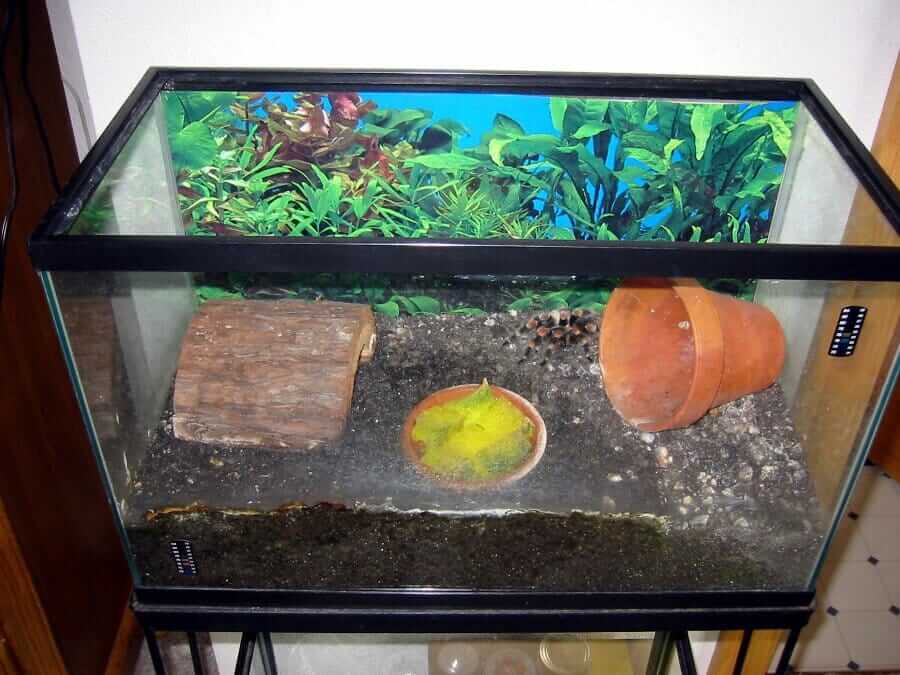
Heating
It’s
a good idea to keep the temperature inside the cage in between 70-90
degrees Fahrenheit, depending on what kind of spider you have. It’s okay
if the temperature drops below 70 degrees at night, but if the
temperature gets too cool (cooler than 62 degrees), a heating device
will be helpful.
Try to avoid heating rocks, for they can very
easily burn a spider. Heating pads are acceptable for ground dwellers,
but not very logical for burrowers. Spiders will burrow if they get hot
to avoid heat and the sun. If a very large quantity of heat is coming
from the ground and they are burrowing to get away from the heat, then
the heating pad may be creating more problems than not.
I have
used a 50 watt red overhead heating light, and it seemed to work fairly
well. On thing I find interesting is that tarantulas can’t see red
light, so you can use a red light (any red party light you can pick up
at a superstore) to watch your spider go on hunting trips without
bothering him/her. I’ve seen pictures of the light being placed
physically inside the cage, but advise against this practice because of
the possibility of the spider getting burned.
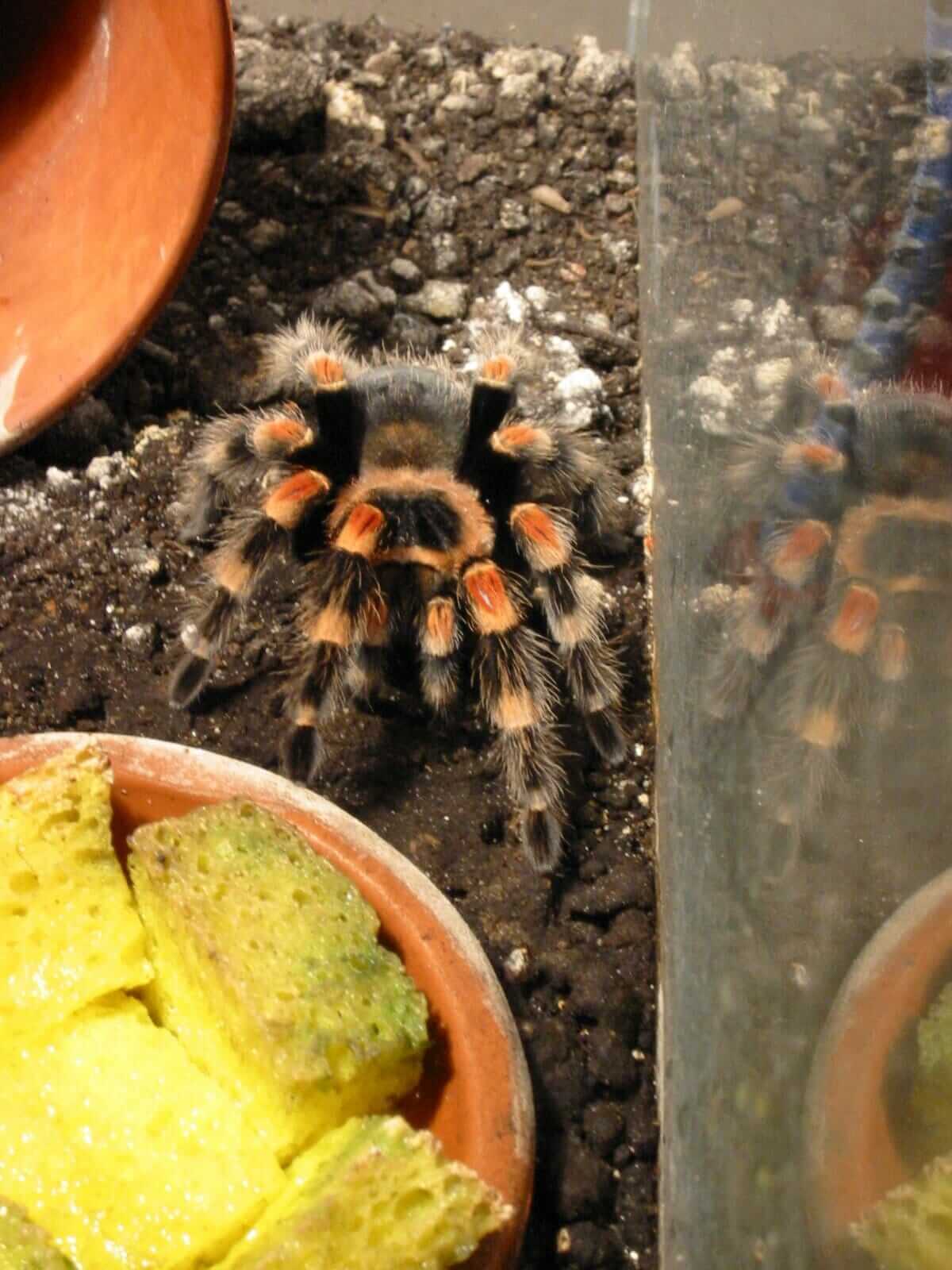
Substrate
I
have had considerable experience with different substrates. I first
started with vermiculate, but my tarantula absolutely hated it. Some
sites advertise vermiculite as a very good substrate, but it really
irritated my spider, causing her to spend most of her time hanging on
the sides of the tank and on decorations. Tarantulas.com states that
vermiculite possibly contains carcinogenic fibers, and I am not very
excited about having my tarantula live on carcinogenic fibers.
I
then tried various mixtures of soils, with an acceptable mixture being
about 40% sphagnum peat moss, 20% potting soil, and 40% topsoil. This is
the only mixture in which Merbet has burrowed.
Then it came time
to replace the substrate (discussed later), and couldn’t find a mixture
that the spider would accept. I finally settled on coconut fibers (sold
as a block, such as Eco Dirt). The coconut fibers seem to work very
well. A coconut fiber substrate is (in my opinion) the best all-around
substrate: it retains moisture, is very safe and natural, and is usually
easily accepted by spiders. I would say to have around 3-5 inches of
moistened substrate at the bottom, especially for a burrowing spider
such as the Mexican Red Knee.
I found it’s significantly easier to
start out with the right substrate than to have to remove the spider
and change the substrate until a suitable substrate is discovered. I
would recommend changing the substrate around every 8 months, unless it
looks extremely dirty (nice pun) before then.
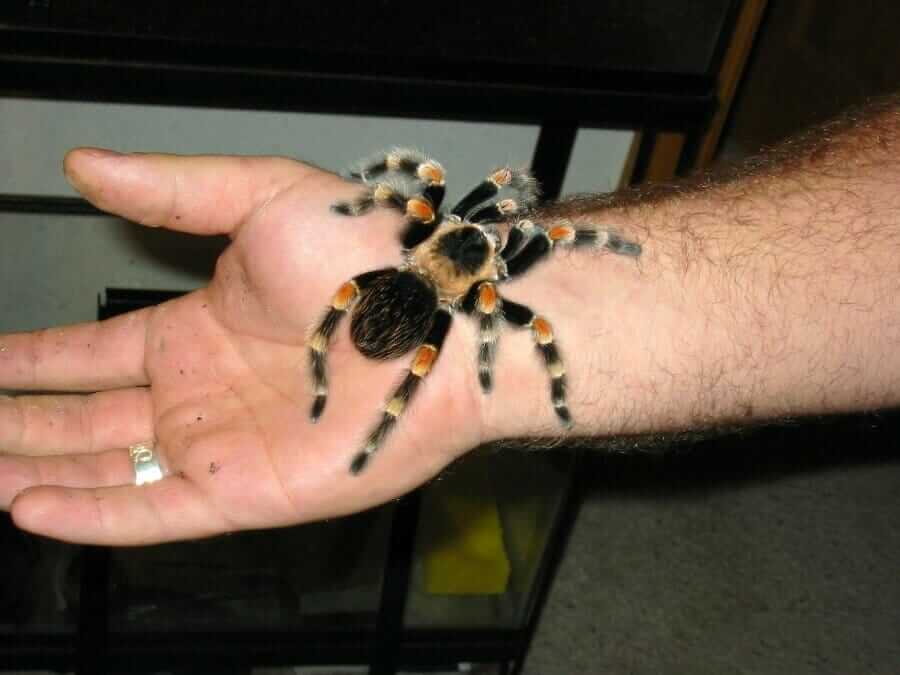
Feeding
If
you want to keep your spider safe during feeding, be smart with what
you place in the cage. Don’t attempt to feed the spider anything too
large (based on the size of adult tarantulas, I find large crickets to
be very safe). Also, don’t attempt to feed the spider anything
apparently dangerous (for example a bee or wasp). Make sure any insects
taken from the wild are pesticide free or they could be very unhealthy
for the spider.
Remember that tarantulas can go months without
eating, so don’t worry if your tarantula doesn’t eat continuously (but
your tarantula can definitely die if it is not being fed, so make sure
to feed your tarantula regularly. My spider has actually gone around
three months without eating. This topic is covered in more detail on my Tarantula Molting Site,
but tarantulas generally stop eating before they molt. If your
tarantula starts to refuse food, remove uneaten food from the tank to
prevent harm to the spider during a possible molt.
I keep crickets
in a separate 1 or 2 gallon plastic aquarium. The cardboard from a
toilet paper roll makes a great hiding spot for crickets, and a dish
with fish food or gutload for nutrition and cut up fruit for moisture
will keep the crickets alive and healthy. Don’t forget to keep a full
water dish inside the spider’s tank. I have a few sponges in my spider’s
tank so crickets and my spider stay safe, and I’ve read that the
sponges make it easier for tarantulas to drink water.
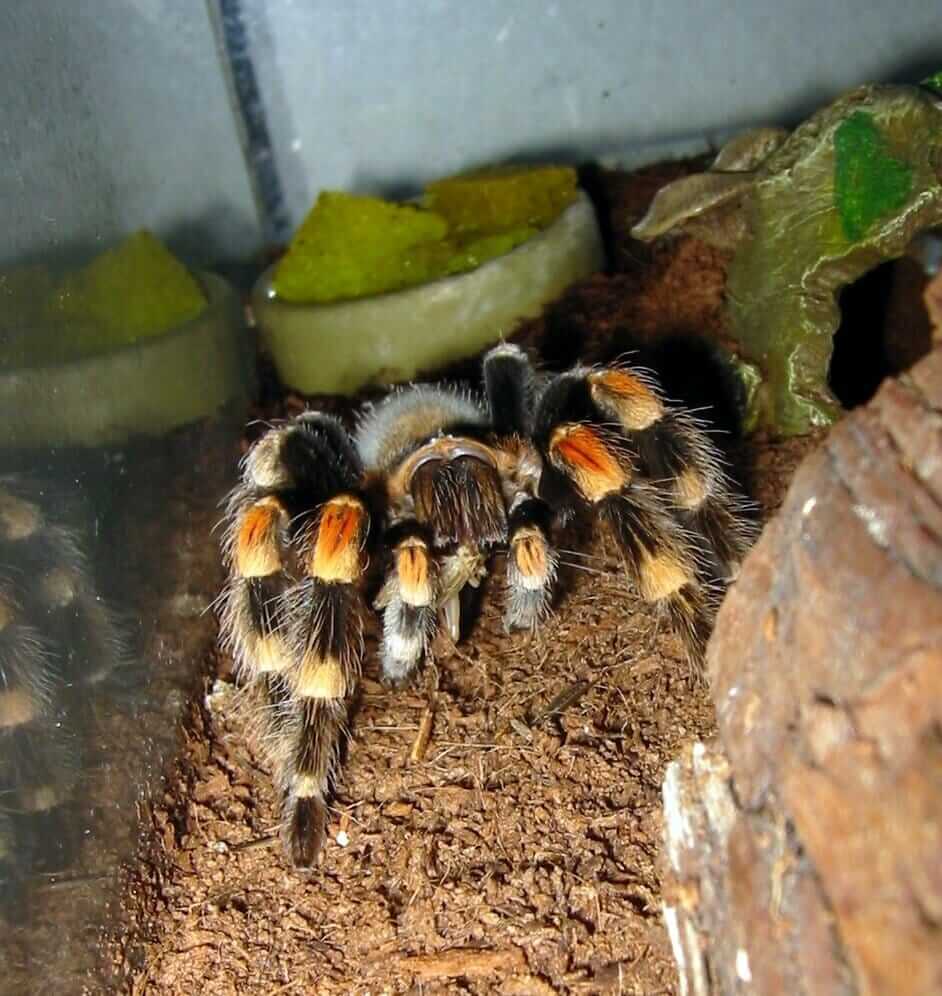
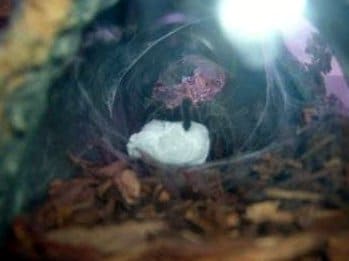
Mating/Spiderling
I
decided to add this section after receiving an inquiry concerning a
tarantula egg sack. I personally had never seen an egg sack, nor
understood what it meant to have an egg sack. After doing some research,
I discovered a few important things. In the picture to the right, the
tarantula is protecting her egg sack. She will do this until the egg
sack hatches, which takes around 4-6 weeks. The quantity of spiderlings
that arise when the egg sack does hatch is truly phenomenal, as
illustrated at http://backalley.net/rosehair/.